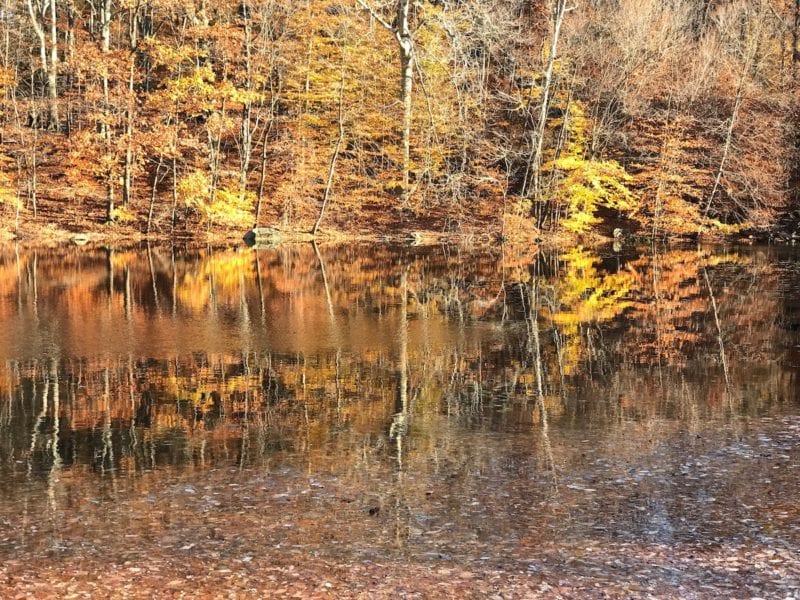Here is a recent recent haiku of mine, which embodies the main theme of my memoir. I hope you will enjoy it as well as my comments.
where trees meet the lake
November colors blurring
all the boundaries
At the lakeshore it becomes almost impossible to tell where the oranges and yellows of the autumn leaves become their reflections in the water. They seem to merge, color washing from one into the other. The poet has a moment of experiencing the oneness of no boundaries.
But of course, in reality there are no boundaries in nature. It is humans who create them. It is we who separate one from the other drawing demarcation lines between countries, sky and water and, as well, between people.
My book begins with a sharp line drawn between brokenness and wholeness. Edna was broken and I was whole, with a chasm between us. Then I realized I, too, was broken with my own disability. Gradually through the progressions of the book that boundary breaks down.
Brokenness and wholeness are inseparable and intertwined. Edna was whole the way she was, not a broken version of some other template.
Sometimes society creates differentiations meant to be helpful. It might be useful to delineate that a particular child needs special services, but only if that child is not judged as “less than.” It can be so hard not to see others or ourselves as damaged. We have been wounded. But how do we carry our wounds? If the words shame, contempt or inferior rise up, we are living on the “broken” side of the ledger.
What is the way towards a perspective that includes wholeness?
Take a moment to return to the poem, to pause and read it again. Take one more moment to breathe in the wholeness of the image of tree/lake.
Take that with you as you continue walking around the lake.


Thank you for your lovely talk this evening and the reminder we never know what someone else has truly
Experienced in their insides in their life
Thank you so much for attending. Glad this resonated for you!!!